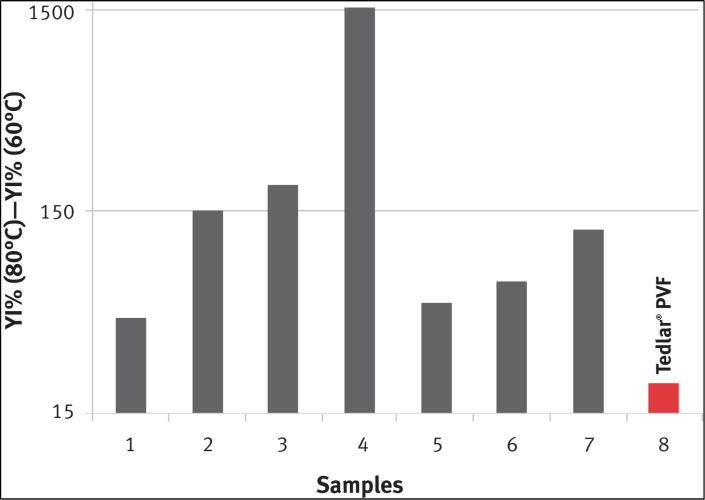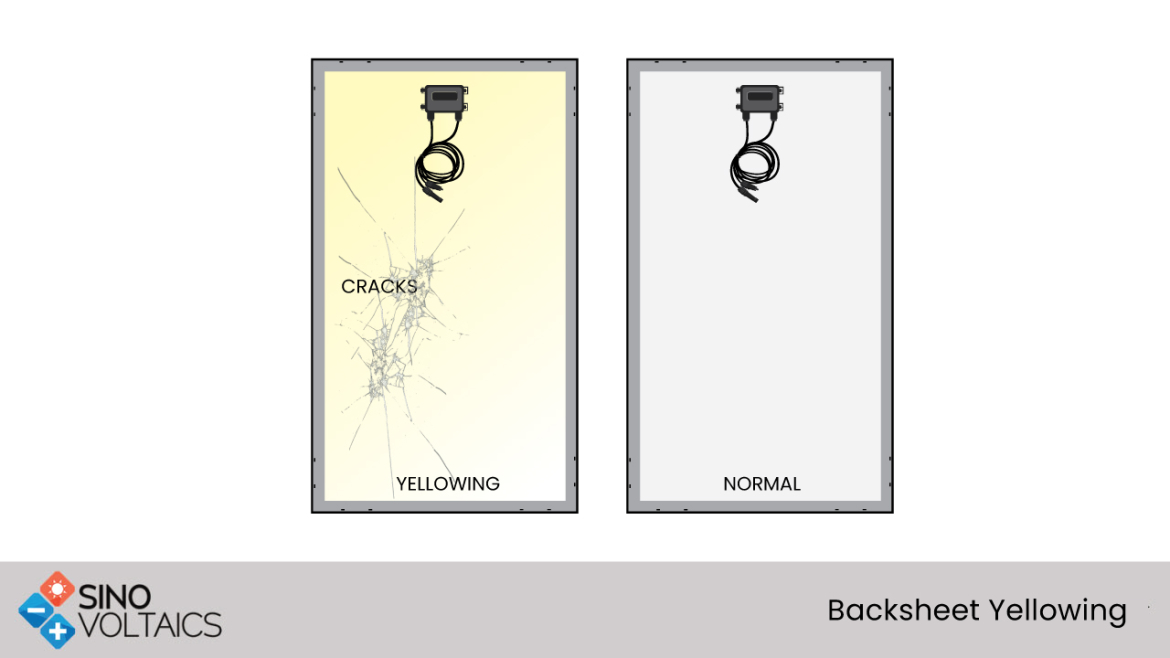Fluxing Agents: Types and Applications
Tabbing Ribbons: Design and Purpose
VOC-Free Fluxing Agents
Bussing Ribbons: Design and Purpose
Fiberglass as PV Module Superstrate
Ethylene Tetrafluoroethylene
Tin/silver/copper (SnAgCu)
Tin/Silver Alloy
[...]
 Figure 1: Results from Fraunhover study (source: PVDiagnosis)[/caption]The results of Franhouver study are represented in the graph above. Backsheet yellowing of different types of materials exposed to a constant amount of UV is shown. Variation of yellowing is measured at two different temperatures (60C and 80C). The following observations was concluded from the study:
Figure 1: Results from Fraunhover study (source: PVDiagnosis)[/caption]The results of Franhouver study are represented in the graph above. Backsheet yellowing of different types of materials exposed to a constant amount of UV is shown. Variation of yellowing is measured at two different temperatures (60C and 80C). The following observations was concluded from the study:
